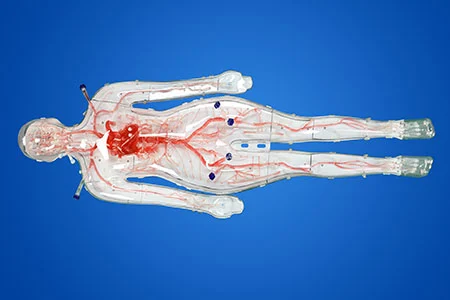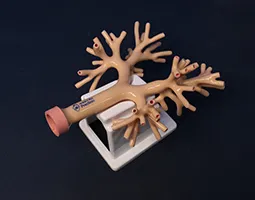Patient safety is a critical aspect of healthcare, and ensuring the highest level of safety requires well-trained healthcare professionals. Medical simulation training equipment has emerged as a powerful tool in healthcare education, enabling professionals to practice and refine their skills in a safe and controlled environment. In this blog post, we will explore how medical simulation training equipment plays a significant role in improving patient safety and the various ways it benefits healthcare professionals and the overall quality of care provided.
Medical simulation training equipment offers a realistic replication of various medical scenarios, ranging from routine procedures to complex emergencies. This equipment includes anatomically accurate simulators, virtual reality systems, and task trainers that mimic patient physiology, anatomy, and pathologies. By simulating real-life scenarios, healthcare professionals can practice critical decision-making, develop clinical reasoning skills, and understand the potential consequences of their actions. This realistic training enhances their ability to handle unexpected situations, ultimately leading to improved patient safety.
One of the primary advantages of medical simulation training equipment is the creation of a safe learning environment. Traditionally, healthcare professionals had limited opportunities to practice skills directly on patients, which carried inherent risks. Simulation equipment eliminates these risks by providing a controlled environment where professionals can make mistakes, learn from them, and refine their techniques without compromising patient safety. This safe learning environment allows professionals to build confidence, develop muscle memory, and enhance their skills, all of which contribute to a higher level of patient safety during actual clinical practice.
Medical simulation training equipment not only focuses on individual skill development but also promotes teamwork and collaboration among healthcare professionals. Simulated scenarios involving multidisciplinary teams allow professionals to practice effective communication, coordination, and teamwork, which are critical for delivering safe and coordinated patient care. Through realistic simulations, professionals can identify and address communication gaps, develop leadership skills, and understand the importance of interdisciplinary collaboration. This enhances patient safety by fostering a culture of effective teamwork and shared decision-making in real-life clinical settings.
Medical staff need to make correct judgments and handle them within a limited time, which is very helpful for improving their emergency response ability.
The emergency department's rescue work requires close cooperation and collaboration among multiple medical staff. Through different types of medical simulation, medical staff can conduct teamwork training in actual scenarios to improve their teamwork ability.
VR medical simulation provides a risk-free high-frequency training environment where doctors can conduct repeated training and simulate various complex surgical operations to improve their operational proficiency and ability to respond to emergencies.
Diverse case simulation: VR surgical simulator can simulate a variety of different cases and complex surgical scenarios, which is crucial for the comprehensive ability training of doctors. In traditional training, doctors often only have access to limited cases and types of operations, especially in the case of some rare diseases or complex cases, surgeons rarely have the opportunity to conduct actual combat exercises.
Medical simulation training equipment enables healthcare professionals to engage in continuous improvement and competency assessment. With regular simulation-based training, professionals can assess their performance, identify areas for improvement, and track their progress over time. Objective feedback provided by the equipment helps professionals understand their strengths and weaknesses, allowing them to focus on specific areas that require further development. This iterative process of training and assessment ensures that professionals remain up to date with the latest practices, techniques, and guidelines, ultimately enhancing patient safety and the quality of care delivered.
Medical simulation training equipment is a powerful tool that significantly contributes to improving patient safety in healthcare. By replicating real-life scenarios, creating a safe learning environment, promoting skill enhancement and teamwork development, and enabling continuous improvement and competency assessment, simulation training equipment empowers healthcare professionals to deliver safer and more effective care. As technology advances, the integration of medical simulation training equipment will continue to play a vital role in healthcare education, fostering a culture of patient safety and enhancing the overall quality of healthcare services provided.
You May Like:
surgical simulator manufacturer
Thoracic Anesthesia Bronchoscopy Simulator


